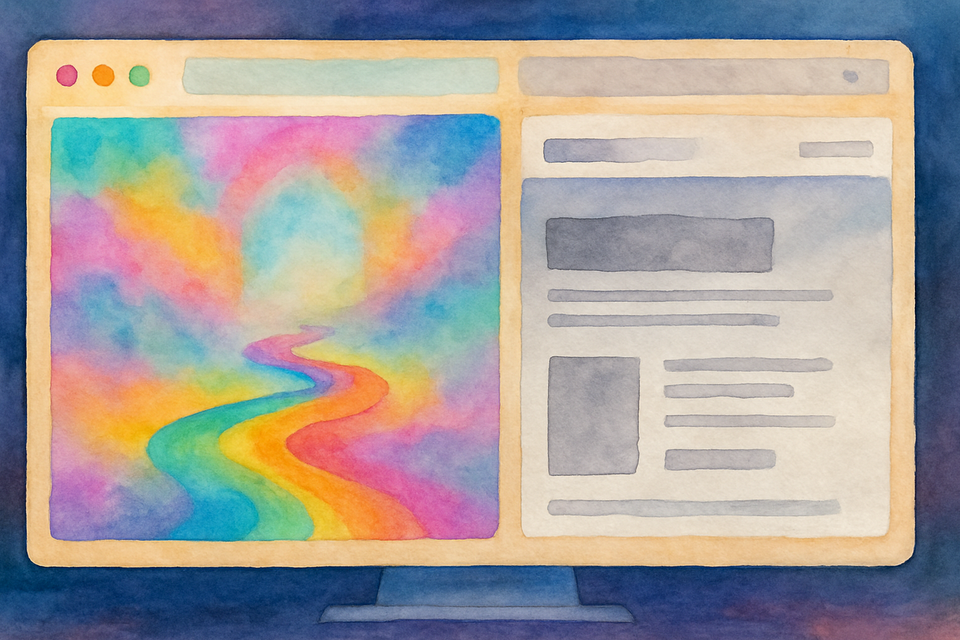The split-screen mind of the researcher

“So, what experiment should we do next?” asks the student.
And two different tabs open up side to side in your mind.
Tab 1: Taking a stroll in your field
In this tab, there are no real rules. You are wandering on the signaling pathways, thinking back to the intersections that you encountered before and at the same time, looking for new ones that could appear in the continuation of this little walk. You have some vague ideas, maybe some studies you heard about, that flash into your brain, here and there, and make their own connections with other exciting bits of information you suddenly remembered. By now, you probably want to read, read, read. Or talk to people: how does this path look, from where they are standing? Keep finding out more, to help grow this part of the pathway that you like. Each new little connection and bursts of small ideas is like finding a geode. Let’s open this one up, it’s decided. There is no end in sight, there is so much to see on your way forward. Personally, I can stay in this tab forever.
Tab 2: Playing reviewers’ advocate
In this tab, you are grounded. There are strict rules here on how to think, clear limitations and typesettings. There is a storyline waiting to be “closed”. There are figures, panels, section titles that go back and forth to different places in the outline of the manuscript you have burnt into your brain. Each step you take, is guided by the silhouette of a reviewer that you created in your mind. Maybe you already have ideas on who this could be, maybe this reviewer even has a face. Or three, four, five faces. And they do not look happy. There is always a problem. This reviewer that spawned in your mind is controlling your story.
They are saying things like:
“This manuscript may be of interest, however…”
“There are major concerns…”
“Although the method is interesting, …”
“Ideally, … should be performed.”
“Authors should…”
You are already having a conversion with them. You know this language, and you speak it fluently too.
“We thank the reviewer…”,
“We apologize for the omission…”
“We appreciate the comment…”
Your imaginary point-by-point response is getting longer and longer. That is when you know what you should add to your paper. This is what they would ask for! Let’s do this experiment, it’s decided. The mindspawn reviewer looks slightly happier, your paper outline is clearer. What a relief.
Adjusting the screens
I think the mental toggle between "what do I actually want to know?" and "what can I get published?" is inevitable in this day and age. In today’s academic world, we have “no chance” but to open up a Tab 2. And I have met researchers who seem to have closed their Tab 1...only looking to satisfy the reviewers of their favorite high-impact journal. Going as far as asking editors what pieces are missing in their story to make it “publishable” in their journal.
I believe it is crucial to keep your Tab 1 as your focus. Because that field you are standing on does not have an end in sight, and the best part of doing research is walking it freely. This is where you can come up with breakthroughs and discoveries, by keeping the passion that made you start in the first place. And I believe it is key to pass this on to the new generation of researchers, so that they cherish the most vital part of doing research.
And when they ask, “So, what experiment should we do next?”, I would redirect the question to them.
Because I don’t know if you have noticed; but unlike you, they only have one screen on their mind, unaware that another one exists.
For them, there is no Tab 2.. not yet.

Comments ()